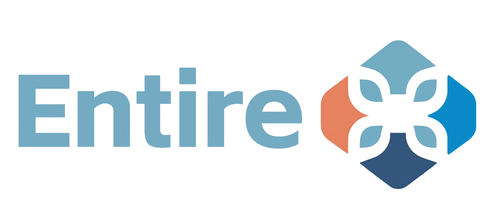Baby Monitors & Projectors (HS 9013) Tariffs: Guide for Tech Toy Brands

The 2025 US tariffs on Chinese imports will affect a range of tech-enabled baby products, including those falling under HS Code 9013, which covers liquid crystal devices (LCDs) not more specifically provided for, and other optical appliances like projectors. For the baby market, this primarily concerns video baby monitors featuring LCD screens (e.g., from brands like Infant Optics, Nanit, Owlet, Cubo Ai) and crib projectors/soothers that use optical elements to display lights or images (e.g., from Fisher-Price, Skip Hop, VTech). Executives must assess tariff impacts on sourcing critical components like LCD panels and optical lenses, ensuring compliance with safety and regulatory standards (UL for electrical safety, FCC for wireless devices, CPSC for children's products), and exploring alternative manufacturing and assembly locations.
- 1. Eyes & Ears on China: US Reliance for Baby Monitors & Projectors?
- 2. Global Watch: Scouting Alternative Hubs for Baby Tech Manufacturing?
- 3. The Price of Pixels & Projections: Cost Shifts in Sourcing Baby Tech?
- 4. Assembled in North America: USMCA Rules for Baby Monitors with Asian Tech Cores?
- 5. Tech Transport: Logistics for Standard vs. Smart Baby Monitors?
- 6. Beyond the Beep: Critical Safety & Quality for Imported Baby Electronics?
- 7. Chip & Screen Squeeze: Supply Chain Risks for Baby Monitor Components?
1. Eyes & Ears on China: US Reliance for Baby Monitors & Projectors?
How reliant is the US market on China for HS 9013-related baby products, specifically video baby monitors with LCD screens (e.g., Infant Optics DXR-8 Pro) and optical crib projectors/soothers (e.g., Fisher-Price Calming Clouds Mobile & Soother)?
The US market is highly reliant on China for the manufacturing and assembly of these products, estimated at 70-90%.
* Video Baby Monitors: While some brands conduct R&D and design in the US or Europe, the vast majority of manufacturing, including sourcing of LCD screens (though the panels themselves may originate from Taiwan, Korea, or China), camera modules, plastic housings, and final assembly, occurs in China due to its established electronics supply chain and cost-effective labor.
* Crib Projectors/Soothers: These items, often combining light projection, sound, and sometimes motion, are also predominantly manufactured in China. This leverages China's capabilities in plastic molding, LED assembly, and integration of simple optical components (lenses, mirrors).
2. Global Watch: Scouting Alternative Hubs for Baby Tech Manufacturing?
Beyond mainland China, are there reliable alternative manufacturing hubs in Taiwan (a major producer of LCD panels), Vietnam (growing in electronics assembly), or Malaysia (established electronics manufacturing) that can supply LCD screens (e.g., from HannStar, Innolux) and optical components (precision plastic lenses), while meeting FCC, UL, and CPSC (small parts, battery safety) requirements?
Yes, viable alternatives are emerging, though full supply chain replication is challenging:
* Taiwan: A primary global source for LCD panels from manufacturers like AU Optronics (AUO), Innolux, and HannStar. While panel manufacturing is here, module assembly and final product integration often occur in China or Southeast Asia.
* Vietnam: Rapidly becoming a significant hub for electronics assembly, including for major brands. Labor costs are competitive, and the supplier ecosystem is developing. Could handle assembly of monitors and projectors if components (like LCDs from Taiwan/Korea/China, ICs) are supplied.
* Malaysia: Has a long-standing electronics manufacturing sector, particularly for E&E components and some finished goods. Offers skilled labor and established infrastructure.
* Thailand & Philippines: Also have electronics manufacturing capabilities that could be leveraged.
Meeting FCC (for radio frequency emissions), UL/ETL (for electrical safety of AC adapters and units), and CPSC (e.g., durable battery enclosures, prevention of small parts liberation for items accessible to children) certifications requires robust quality control and testing, achievable in these locations with qualified contract manufacturers.
3. The Price of Pixels & Projections: Cost Shifts in Sourcing Baby Tech?
What are the unit cost differences when sourcing LCD modules from Taiwan or assembling crib mobiles with optical projection in Vietnam, compared to mainland Chinese products (considering screen resolution/brightness, lens material, LED lifespan, and driver IC solutions)?
- LCD Modules (Taiwan vs. Mainland China): Sourcing bare LCD panels from Taiwan might offer competitive pricing at the panel level, especially for specific technologies or suppliers. However, the cost of the complete LCD module (panel + backlight + driver IC + FPC) assembled in China might still be lower overall due to China's scale in module assembly and a more integrated local supply chain for other module components. Sourcing fully assembled modules from Taiwanese-owned factories in China is common. Direct sourcing of modules from Taiwan might be +5% to +15% costlier than a fully Chinese-sourced equivalent module of similar specs, but can offer supply chain diversification.
- Optical Projection Crib Mobiles (Vietnam Assembly vs. China): Assembling these in Vietnam could be cost-neutral to +10% compared to China. While Vietnamese labor is competitive, the ecosystem for specialized components like custom-molded optical lenses, specific LEDs, and motor/music ICs might be less developed than in major Chinese manufacturing zones like Guangdong. This could mean importing more sub-components into Vietnam, potentially offsetting some labor cost advantages.
4. Assembled in North America: USMCA Rules for Baby Monitors with Asian Tech Cores?
If manufacturing video baby monitors in Mexico or Canada, where the core LCD screen (HS 9013.80) or camera module (possibly HS 8525.89) is imported from Asia, can the finished product meet USMCA origin rules (which often require key components to be North American or undergo substantial transformation)?
This is challenging under USMCA's typical "rules of origin" for electronics.
* Electronics Rules of Origin: Often require a significant "tariff shift" for key subassemblies or a high Regional Value Content (RVC). The LCD screen and camera module are high-value, core functional components.
* Substantial Transformation: If these key modules are imported from Asia, it's unlikely that merely assembling them into a plastic housing with a PCB in Mexico or Canada would constitute a "substantial transformation" sufficient to confer origin, especially if the PCB itself is also populated with non-NA originating ICs.
* Likely Outcome: The finished baby monitor would likely not qualify for USMCA preferential (duty-free) treatment if critical high-value components like the LCD and camera module are sourced from outside North America. The standard MFN (Most Favored Nation) duty rate would apply.
5. Tech Transport: Logistics for Standard vs. Smart Baby Monitors?
How do logistics and inventory management differ when transporting a container of boxed baby monitors or projector toys from China/Taiwan to the US, versus smaller, high-value smart connected baby monitors (e.g., Nanit Pro with AI features) in terms of anti-static packaging, shock protection, and firmware version management?
- Standard Boxed Monitors/Projectors (from China/Taiwan):
- Packaging: Individual retail boxes, often with molded pulp or EPS foam inserts for basic shock protection. Master cartons for container shipping.
- Anti-static: Standard for electronic components within the device, but external packaging might not have extensive anti-static measures beyond basic plastic bags for the unit.
- Firmware: Typically flashed at the factory; less emphasis on post-shipment updates for simpler devices.
- High-Value Smart Connected Monitors (e.g., Nanit Pro, Owlet Dream Sock & Cam):
- Packaging: More robust, premium retail packaging with better internal cushioning (e.g., custom foam, secure compartments) due to higher product value and sensitivity of optics/sensors.
- Anti-static: More stringent anti-static bags/wrapping for the main unit and sensitive accessories.
- Shock Protection: Higher level of shock protection in packaging due to sensitive camera optics, AI processing units, and sometimes delicate sensor components.
- Firmware Version Management: Critical. These devices rely heavily on updatable firmware for features, security patches, and AI algorithms. Batches may need to be tracked by firmware version. Logistics may need to accommodate for potential pre-market firmware updates or ensure specific versions reach specific markets/retailers. Secure over-the-air (OTA) update capability post-sale is a key feature, but initial out-of-box experience is paramount.
6. Beyond the Beep: Critical Safety & Quality for Imported Baby Electronics?
When importing HS 9013-related baby electronics, beyond FCC Part 15 (for RF emissions) and UL/ETL (for power adapter safety), what concerns about LCD screen dead pixel policies, projector brightness/color temperature for infant visual comfort, overall EMC, and material RoHS compliance are important?
Key additional considerations:
* LCD Screen Quality:
* Dead Pixel Policy: Define acceptable dead/stuck pixel counts (e.g., per ISO 13406-2, though manufacturers have their own grades). Critical for user experience.
* Viewing Angles, Brightness, Contrast: Ensure specifications are suitable for typical nursery viewing conditions.
* Projector Optics & Light Output (for soothers):
* Brightness & Color Temperature: Light output should be soothing, not overly bright or stimulating for infants. Warm white or soft colors are preferred. Avoid direct, intense light beams. No official CPSC standards exist for "visual comfort" specifically, but general product safety principles apply.
* Image Sharpness/Distortion: Projector lenses should provide a reasonably clear, undistorted image.
* Electromagnetic Compatibility (EMC): The device should not interfere with other electronic devices and should be immune to a certain level of external interference (FCC Part 15 also covers some aspects of this).
* RoHS Compliance (Restriction of Hazardous Substances): Ensure materials (plastics, solder, components) comply with RoHS directives (limiting lead, mercury, cadmium, hexavalent chromium, PBBs, PBDEs). While an EU directive, many global manufacturers adhere to it. US states may also have similar electronic waste/toxics in packaging laws.
* Battery Safety (if applicable): For portable units or those with backup batteries, ensure compliance with standards like UL 1642 (for lithium cells) and IEC 62133. Battery compartments should be secure from children.
* Material Safety: All accessible plastic and surface coating materials should be non-toxic and ideally BPA-free, phthalate-free.
7. Chip & Screen Squeeze: Supply Chain Risks for Baby Monitor Components?
Are there supply chain vulnerabilities for common components in baby monitors/projectors like specific-sized LCDs, CMOS image sensors, IR LEDs for night vision, or low-power wireless chips (Wi-Fi, FHSS modules), or reliance on specific semiconductor/display makers (e.g., OmniVision, Realtek, BOE, AUO)?
Yes, significant vulnerabilities exist:
* LCD Displays (Specific sizes/resolutions, e.g., 2.4", 3.5", 5"): The market for smaller, non-high-resolution LCDs (often used in baby monitors to manage cost) can be volatile. Production lines may shift to higher-margin, larger displays for other applications. Key suppliers include BOE, AU Optronics (AUO), Innolux, Tianma, HannStar. A shortage in a specific common size could impact many monitor brands.
* CMOS Image Sensors: While many suppliers exist (OmniVision, Sony, Samsung, ON Semiconductor), specific sensors optimized for low-light performance (for night vision) and cost may face allocation issues or sudden price increases if demand spikes in other larger markets (e.g., security cameras, automotive).
* IR LEDs: Generally a commodity, but high-power/efficiency IR LEDs for clear night vision come from specialized suppliers. Quality and consistency can vary.
* Wireless Communication Chips (Wi-Fi, FHSS): Dominated by a few large players (Qualcomm, Broadcom, MediaTek, Realtek, Espressif for Wi-Fi; various for proprietary FHSS). Shortages or allocations of popular, cost-effective chipsets can severely disrupt production. The shift to more secure or longer-range protocols can also lead to reliance on newer, less multi-sourced chips.
* Microcontrollers (MCUs) & Power Management ICs (PMICs): These are fundamental components. Global semiconductor shortages, as seen in recent years, can severely impact their availability and price, affecting all electronics manufacturers.
* Geopolitical Factors: Reliance on manufacturing and component sourcing concentrated in specific regions (primarily China and Taiwan for many critical parts) creates vulnerability to trade disputes, shipping disruptions, or regional instability.
Disclaimer: The information provided in this article is for general informational purposes only and does not constitute financial, legal, or specific sourcing advice. Market conditions are highly dynamic and specific advice should be sought from qualified professionals.




